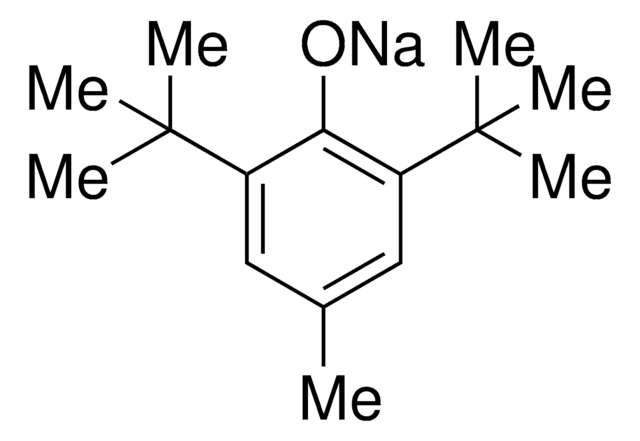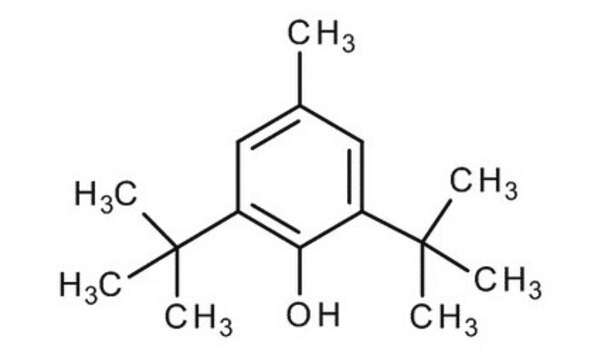03-4720
2,6-Di-tert-butyl-4-methylphenol
SAJ first grade, ≥99.0%
Synonyme(s) :
Butylhydroxytoluène, Hydroxytoluène butylé
About This Item
Produits recommandés
Qualité
SAJ first grade
Densité de vapeur
7.6 (vs air)
Pression de vapeur
<0.01 mmHg ( 20 °C)
Essai
≥99.0%
Température d'inflammation spontanée
878 °F
Disponibilité
available only in Japan
pb
265 °C (lit.)
Pf
69-73 °C (lit.)
Chaîne SMILES
Cc1cc(c(O)c(c1)C(C)(C)C)C(C)(C)C
InChI
1S/C15H24O/c1-10-8-11(14(2,3)4)13(16)12(9-10)15(5,6)7/h8-9,16H,1-7H3
Clé InChI
NLZUEZXRPGMBCV-UHFFFAOYSA-N
Vous recherchez des produits similaires ? Visite Guide de comparaison des produits
Mention d'avertissement
Warning
Mentions de danger
Conseils de prudence
Classification des risques
Aquatic Acute 1 - Aquatic Chronic 1
Code de la classe de stockage
11 - Combustible Solids
Classe de danger pour l'eau (WGK)
WGK 2
Point d'éclair (°F)
260.6 °F - open cup
Point d'éclair (°C)
127 °C - open cup
Équipement de protection individuelle
dust mask type N95 (US), Eyeshields, Gloves
Faites votre choix parmi les versions les plus récentes :
Déjà en possession de ce produit ?
Retrouvez la documentation relative aux produits que vous avez récemment achetés dans la Bibliothèque de documents.
Notre équipe de scientifiques dispose d'une expérience dans tous les secteurs de la recherche, notamment en sciences de la vie, science des matériaux, synthèse chimique, chromatographie, analyse et dans de nombreux autres domaines..
Contacter notre Service technique



